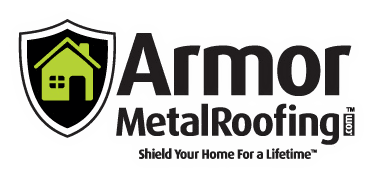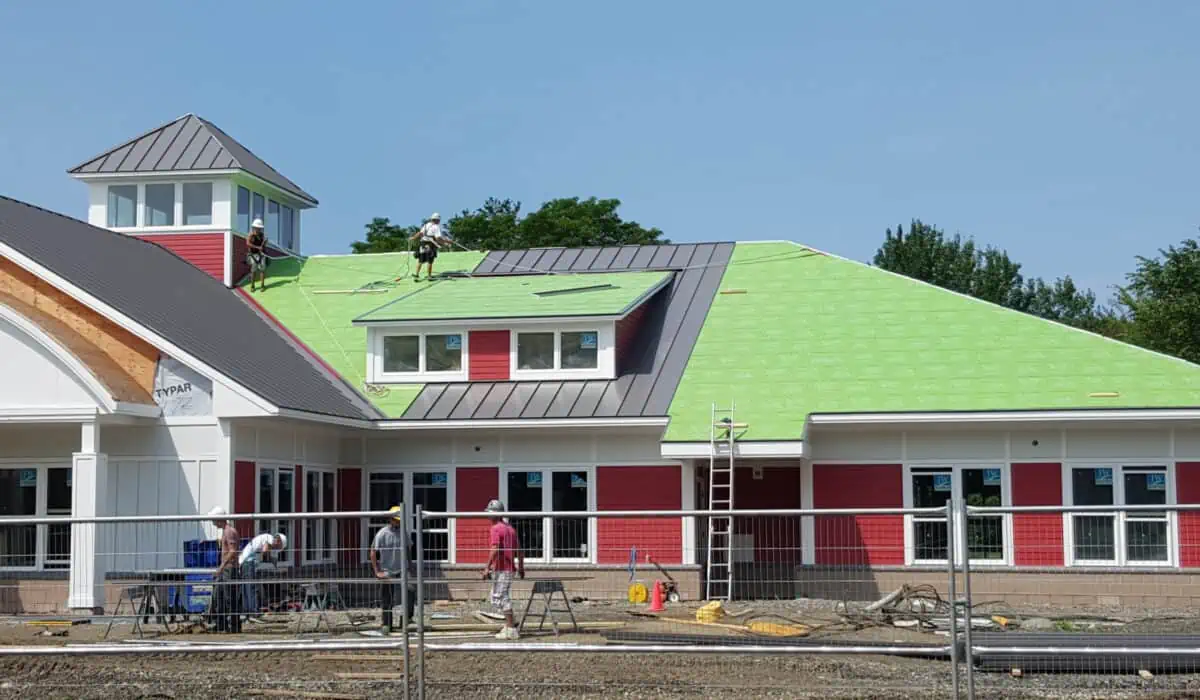About Commercial Roofing
The Fall and Winter months throughout New England are notoriously brutal, with many regions experiencing lows of −50 °F and snowfall of nearly 100 inches each year. Spring and Summer are mild, a mix of rain, low humidity and warm breezes but one thing is certain: commercial buildings take a beating, often going from one weather extreme to the next in the span of only a few weeks. For these reasons, business owners can be perplexed about roofing options that suit their properties, and which system provides the right combination of protection, efficiency, and value over the long haul.
There are four types of commercial roofing systems to choose from, each offering a number of advantages worth more than a passing glance. These systems are: Thermoplastic Roofing, EPDM Roofing, Photovoltaic Panels (aka Solar Roofing), and Green Roofing.
Thermoplastic Roofing Systems
Featuring a high resistance to fire, punctures, chemicals and high winds, Thermoplastic Roofing systems are among the fastest growing options for commercial roofing needs. Made of a durable material with high-temperature tolerance and low-temperature flexibility, these roofs are especially resistant to ultraviolet, ozone and chemical exposure. Thermoplastic Roofing Systems have a 20+ year lifespan.
Advantages
Thermoplastic Roofing systems are naturally UV and heat resistant, offering a number of advantages over other commercial and residential roofing systems. These roofing systems maintain flexibility while aging, further helping to increase lifespan. Other advantages include:
- Resistance to a wide variety of chemicals.
- Eco- friendly and recyclable.
- White Thermoplastic Roofing provides significant energy savings
- Simple and minimal maintenance.
EPDM Roofing Systems
The EPDM (ethylene propylene diene terpolymer) rubber roofing membrane has been the go-to choice for the low-slope commercial roofing industry for more than 40 years, racking up more than 500,000 warranted roof installations on more than 20 billion square feet of commercial properties. EPDM Roofing systems account for more than a billion square feet of new commercial roofs in America, making it the most frequently selected roofing material in the marketplace.
Advantages
EPDM Roofing systems offer the commercial roofing industry the longest lifespan, thanks to advantages such as:
- Resistance to hail, ozone, weathering and abrasion.
- Flexibility in low temperature conditions.
- The ability to withstand extreme heat and fire.
- Resistance to thermal shock and ultraviolet radiation.
Photovoltaic Panels
According to the United States Department of Energy, the cost for air conditioning systems in all structures across the country exceeds $40 billion annually, chewing up 60 percent of the nation’s total electricity output. This means that many consumers, particularly in the commercial marketplace, are looking for options in green and sustainable energy. An obvious choice is solar energy roofing systems. PV solar panels installed on a rooftop or used with glass, membrane and roof-mounted tile, absorb sunlight, turning it into energy to power a building. Though not widely used, they are a viable defense against skyrocketing costs.
Advantages
- Though expensive, renewable energy green roofing systems pay for themselves in utility savings over time.
- Stylish options are available to make PV panels resemble normal roofing shingles and tiles.
- Potential profit generation, as unused power can be sold back to a utility company.
- Numerous states offer subsidies and tax credits for businesses that install these systems, including incentives from the U.S. government and utility companies, and faster depreciation allowing the system to pay for itself in as little as five years.
- Photovoltaic Roofing systems costing $225,000 could result in $450,000 in total incentives, savings, and revenue over a 25 year period.
Green Roof Systems
Business owners have varied motivation for installing green roof systems because of many benefits over traditional roofing, like LEED certification and overall energy conservation resulting in a smaller utility expenses.
Regardless of the motivating factors, construction follows the same basic workflow. The key components are decking, waterproofing, insulation, drainage, filter cloth, medium and, last but not least, plants. The types of plants selected depend on the roof’s primary purpose, but comes down to how much time and money can be spent on roof maintenance.
Advantages
Green roofing can help a business save money through reduced energy costs, and even provide revenue through the sale of unused energy back to the local utility company. Other advantages include:
- Aesthetic improvements. Many large commercial buildings, particularly those in manufacturing, now use Green Roof systems as a means of improving the “visual” aspects of their property.
- Waste diversion, through the use of recycled materials in the growing medium, and prolonging the service life of heating, cooling, and other systems through decreased use.
- Storm water management is another key benefit. Green roofs store water in the substrate, which is then taken up by the plants from where it is returned to the atmosphere by means of transpiration and evaporation. Besides rain water retention, Green roofs also act as a natural filter for any water that runs off the roof.
- Moderation of Urban Heat Island (UHI) Effect. Thanks to daily dew and evaporation cycles, plants on vertical and horizontal surfaces help cool cities during hot summer months and reduce the UHI effect.
- Better air quality. Roof-based plants naturally capture airborne pollutants and other debris, and act as a filter for potentially noxious gases. Another important benefit is green roofs help reduce demand on power plants, potentially decreasing CO2 and other polluting by-products that make it into the air.
- New amenity spaces, such as community gardens, recreation areas, and extra commercial space.
- More job growth, particularly in formerly dense urban areas that were previously unusable.
Commercial roofing systems are a major investment for any business owner, as they require not only significant resources and manpower, but a commitment to ongoing maintenance. Most commercial roofing systems can be expected to last anywhere from 12 to 25 years, but that depends on the skill with which they’re installed and maintained, and the environment in which they operate. In the long run, key considerations for any roofing system in New England are durability, cost savings, and environmental friendliness that can pay significant dividends in the long run.

